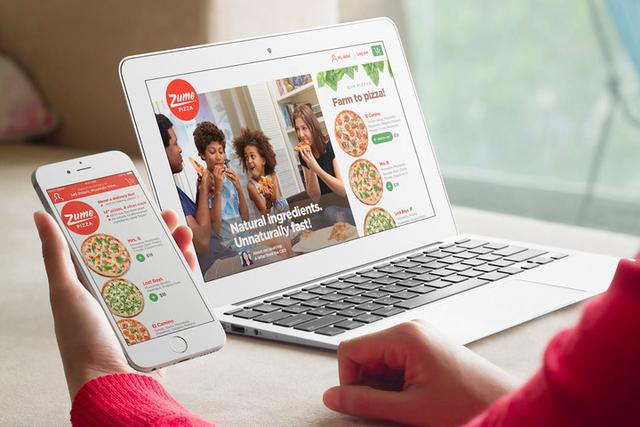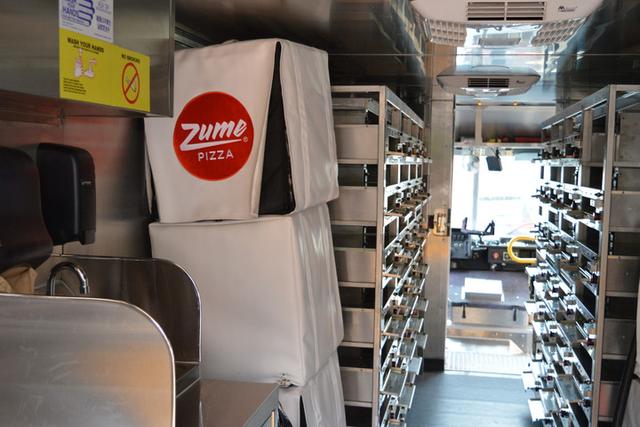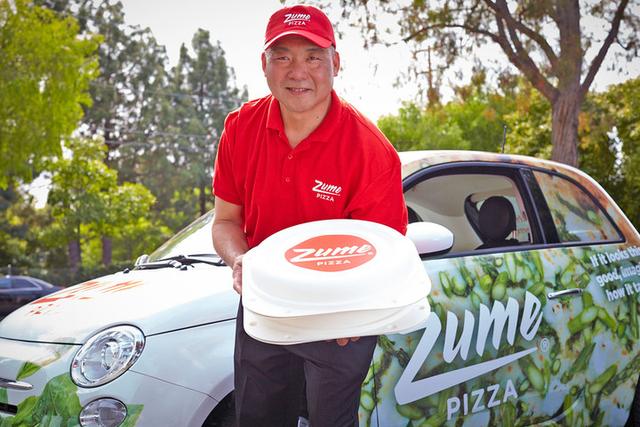
Tencent Digital (Compilation: Hamish) Imagine this scenario: On a Saturday night, you and your partner are discussing what to eat at night. You can choose to go out to the restaurant, but you are certainly more willing to eat at home during a busy week. At this time, you open the Zume app and choose the classic pizza. A few minutes later, a hot pizza will be delivered to your doorstep.
This is the vision that Silicon Valley startup Zume has depicted for us. Instead of using Domino's or Pizza Hut's business model, this company uses robots instead of artificially responsible for most of the pizza production. The advantage of Zume is that its robots can finish pizza production within minutes, while other employees can make time for more.
Zume names these robots Marta, which does not completely replace human tasks, but instead is responsible for the relatively mechanical and boring parts of pizza making. For example, the process of squeezing sauce and putting pizza into the oven is done by the robot, while humans are responsible for kneading the dough and sending the finished product to the customer's door.
“I believe that our kitchen automation will reach 80% in March next year,†said Julia Collins, co-founder and CEO of Zume. “The job humans have to do is quality control and delivery. We will do a final check before the pizza is delivered.†Zume’s goal is to do “aqua-food in the Amazon,†which will open in San Jose, California, in the first quarter of next year.
Artificial intelligence accelerates order speed
Zume uses "predictive deployment" technology to speed up order distribution. This is an artificial intelligence technology that can automatically place orders before users make decisions. Because human beings are animals that can develop habits, if a person finds his favorite pizza taste, he will repeat orders, usually on the same day of each week.

Therefore, Zume can predict what kind of user will choose which kind of pizza, and the pizza will be ready to be delivered to the user in a few minutes before the user orders.
In comparison, Domino's pizza has an average delivery time of 45 minutes, and Zume's delivery time can be controlled from 5 to 15 minutes. Because some of the pizza can be prefabricated in advance, it is still fresh when it is delivered to your home. Zume's pizza has just been produced just four minutes away from the user's place of residence.
The Secret of Pizza Robot Wipes
Zume is headquartered in Mountain View, California, just minutes from Google headquarters. There is a large kitchen here and many pizza robots are running. On the edge is an office, more than a dozen engineers are nervously developing robots and Zume applications.

In the large kitchen, the human staff is responsible for kneading the dough and placing the kneaded dough on a conveyor belt. Then, a robot sprays some of the sauce on the dough, and the other robot uses a robotic arm to wipe it away. Next, human staff will add materials such as cheese and pepperoni to the dough, and the robot will send the dough to the oven. After grilling is completed, human employees are responsible for controlling the quality of the pizzas and placing them in boxes for distribution.
Zume truck is responsible for the final process
In addition to owning a high-tech kitchen, Zume also operates some high-tech Zume trucks. Each truck is equipped with 56 ovens. The iPad is responsible for order collection and vehicle navigation. Each area is in charge of a specific vehicle, which guarantees the pizza's heat.

This means that Zume does not need to open a physical store in every area. Each truck can be responsible for a specific area. Pizza can be completed directly on the road. This saves time and costs.

Innovative mode, good taste
It is not enough to have an innovative model. What is more important is the quality of the product. Zume's pizza tastes good, far better than some fast food pizza. There was a lot of sauce on the pizza. Obviously it was a credit to the robot.
Perhaps we will think that if Zume is busy building a business model, then it is very easy to ignore the pizza production ring. Fortunately, it did not forget. There is no technology content for pizza, which can be purchased directly from the local market. This is a good thing for Zume. “We were able to get the dough to ferment for 48 hours and purchase dried tomatoes from Verdi, California, because we saved costs in other ways,†Collins said.
So the final product? From the ingredient list, each piece of Domino's pizza has a calorie of 300 calories, while Zume pizza has 170 calories and a lower sodium, fat, and cholesterol content.
What are the human employees doing?
Although most of the pizza production process was done by the Zume robot, Zume still invested a lot of money for human staff.

"Zume decided to adopt a phased automated process to create jobs for human employees and train these employees' coding, graphic design or customer service skills. This is the philosophy behind us." Collins said.
Because pizza robots save a lot of money, Zume can provide human employees with higher salaries than their peers. Some take-out pizza companies only pay minimum wages for their employees, and most of their income depends on tips. Zume’s full-time employees enjoy higher standards of health and dental insurance, with an average hourly income of US$17.
Conclusion
As a start-up company, it is clear that Zume is currently difficult to shake Domino's and Pizza Hut's position. Zume pizza tastes better, delivery time is shorter, and the price is equal to other brands, perhaps it can play its own part.
Source: Digital Trends